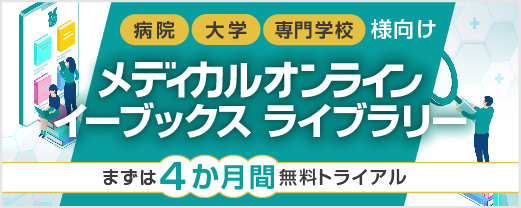アブストラクト
Japanese
| Title | Pusher現象を呈した脳卒中患者に対する作業療法によりADL改善がみられた一症例 - 身体垂直性の再学習に着目したアプローチと長期経過 - |
|---|---|
| Subtitle | 実践報告 |
| Authors | 本間莉那*1, 大瀧亮二*1, 笹原寛*1, 斎藤佑規*2, 竹村直*2 |
| Authors (kana) | |
| Organization | *1社会福祉法人恩賜財団済生会山形済生病院リハビリテーション部, *2社会福祉法人恩賜財団済生会山形済生病院脳神経外科 |
| Journal | 作業療法 |
| Volume | 40 |
| Number | 5 |
| Page | 683-690 |
| Year/Month | 2021 / 10 |
| Article | 報告 |
| Publisher | 日本作業療法士協会 |
| Abstract | 「要旨」 : Pusher現象を呈する脳卒中患者のうち約80%は, 発症約3ヵ月でPusher現象が消失すると報告されている. Pusher現象が長引く場合, リハビリテーションの効果は低く, ADLの回復に影響を与え, 結果入院期間が長期化するとされている. 今回, 脳卒中発症後3ヵ月以降もPusher現象が残存し, ADLに全介助を要した症例に対して, Pusher現象の発生機序とされている主観的身体垂直 (SPV) の再学習を目的に長期的な作業療法を実施した. 結果, Pusher現象が軽減し, ADLの自立度が向上した. Pusher現象の発生機序や病態を理解したうえでの, 段階的で長期的な作業療法は有効である可能性が示唆された. |
| Practice | 医療技術 |
| Keywords | Pusher現象, ADL, (長期経過), (SPV), Pusher syndrome, Activities of Daily Living (ADL), Long-term process, Subjective Postural Vertical (SPV) |
English
| Title | Improvement of ADL performance by occupational therapy for a stroke patient with pusher syndrome : Long-term process of relearning of postural vertical |
|---|---|
| Subtitle | PRACTICAL REPORTS |
| Authors | Rina Honma*1, Ryoji Otaki*1, Hiroshi Sasahara*1, Yuki Saito*2, Sunao Takemura*2 |
| Authors (kana) | |
| Organization | *1Department of Rehabilitation, Yamagata Saisei Hospital, *2Department of Neurosurgery, Yamagata Saisei Hospital |
| Journal | JAPANESE OCCUPATIONAL THERAPY RESEARCH |
| Volume | 40 |
| Number | 5 |
| Page | 683-690 |
| Year/Month | 2021 / 10 |
| Article | Report |
| Publisher | JAPANESE ASSOCIATION OF OCCUPATIONAL THERAPISTS |
| Abstract | It has been reported that pusher syndrome was eliminated in almost 80% of affected patients within three months after stroke. However, prolongation of pusher syndrome results in reduced ADL performance and extended hospitalization. As Subjective Postural Vertical (SPV) is a mechanism of pusher syndrome, we intervened with long-term occupational therapy which was graded for the components of the SPV. As a result, pusher syndrome was reduced, and ADL performance was improved, indicating that long-term graded occupational therapy increases the understanding the pathogenesis of pusher syndrome. |
| Practice | Medical technology |
| Keywords | Pusher syndrome, Activities of Daily Living (ADL), Long-term process, Subjective Postural Vertical (SPV) |
- 全文ダウンロード: 従量制、基本料金制の方共に770円(税込) です。
参考文献
- 1) Davies PM: Steps to Follow: A Guide to the Treatment of Adult Hemiplegia. Springer-Verlag Berlin Heidelberg, New York, 1985, pp.266-284.
- 2) Karnath HO, Ferber S, Dichgans J: The origin of contraversive pushing: Evidence for a second graviceptive system in humans. Neurology 55(9):1298-1304, 2000.
- 3) Karnath HO, Broetz D: Understanding and treating "pusher syndrome". Phys Ther 83(12):1119-1125, 2003.
- 4) Santos-Pontelli TEG, Pontes-Neto OM, Colafemina JF, de Araujo DB, Santos AC, et al: Contraversive pushing in non-stroke patients.J Neurol 251(11):1324-1328, 2004.
- 5) Danells CJ, Black SE, Gladstone DJ, McIlroy WE: Poststroke "pushing": Natural history and relationship to motor and functional recovery. Stroke 35(12):2873-2878, 2004.
残りの12件を表示する
- 6) Karnath HO, Johannsen L, Broetz D, Ferber S, Dichgans J: Prognosis of contraversive pushing. J Neurol 249(9):1250-1253, 2002.
- 7) Krewer C, Luther M, Muller F, Koenig E: Time course and influence of pusher behavior on outcome in a rehabilitation setting: A prospective cohort study. Top Stroke Rehabil 20(4):331-339, 2013.
- 8) Pedersen PM, Wandel A, Jorgensen HS, Nakayama H, Raaschou HO, et al: Ipsilateral pushing in stroke: Incidence, relation to neuropsychological symptoms, and impact on rehabilitation. The Copenhagen Stroke Study. Arch Phys Med Rehabil 77(1):25-28, 1996.
- 9) D'Aquila MA, Smith T, Organ D, Lichtman S, Rehading M: Validation of a lateropulsion scale for patients recovering from stroke. Clin Rehabil 18(1):102-109, 2004.
- 10) Clark E, Hill KD, Punt TD: Responsiveness of 2 scales to evaluate lateropulsion or pusher syndrome recovery after stroke. Arch Phys Med Rehabil 93(1): 149-155, 2012.
- 11) Bergmann J, Krewer C, Riess K, Muller F, Koening E, et al: Inconsistent classification of pusher behaviour in stroke patients: A direct comparison of the Scale for Contraversive Pushing and the Burke Lateropulsion Scale. Clin Rehabil 28(7):696-730, 2014.
- 12) Babyar SR, Peterson MGE, Bohannon R, Perennou D, Reding M: Clinical examination tools for lateropulsion or pusher syndrome following stroke: A systematic review of the literature. Clin Rehabil 23(7):639-650, 2009.
- 13) Johannsen L, Broetz D, Karnath HO: Leg orientation as a clinical sign for pusher syndrome. BMC Neurol 23:6-30, 2006.
- 14) Brandt T, Dieterich M, Danek A: Vestibular cortex lesions affect the perception of verticality. Ann Neurol 35(4):403-412, 1994.
- 15) Abe H, Kondo T, Oouchida Y, Suzukamo Y, Fujiwara S, et al: Prevalence and length of recovery of pusher syndrome based on cerebral hemispheric lesion side in patients with acute stroke. Stroke 43(6):1654-1656, 2012.
- 16) Bergmann J, Krewer C, Selge C, Muller F, Jahn K: The subjective postural vertical determined in patients with pusher behavior during standing. Top Stroke Rehabil 23(3):184-190, 2007.
- 17) 渕雅子:高次能機能障害がある方への作業療法(2)プッシャー症候群.OTジャーナル 48(7):659-664, 2014.


